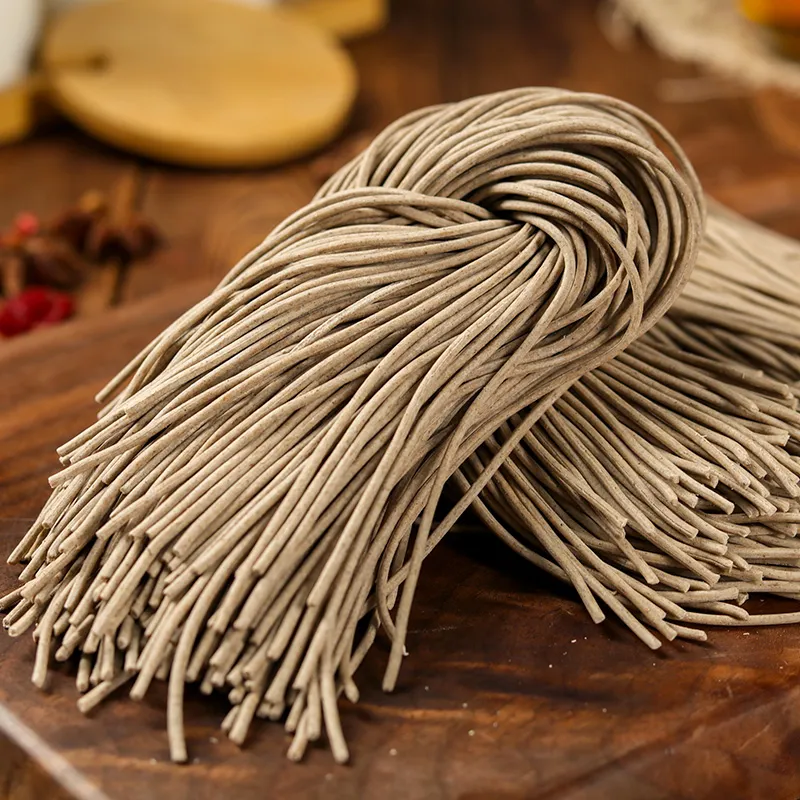феб . 14, 2025 11:41
Back to list
types of udon noodles
Udon noodles, a quintessential part of Japanese cuisine, are beloved for their thick, chewy texture and ability to absorb flavors from accompanying broths and sauces. Exploring the types of udon noodles can elevate your culinary experience, offering distinct tastes and textures suited to various dishes and palates. Understanding the different types of udon not only enhances your appreciation of Japanese food culture but also equips you with the expertise to make informed choices when selecting udon for your next meal.
Nabeyaki Udon is a warm and comforting one-pot dish often served in a donabe (clay pot), making it especially popular during colder months. Along with noodles, nabeyaki udon typically includes chicken, an egg, and vegetables simmered in a rich broth. Its homely presentation and hearty ingredients make it a comforting meal that warms both body and soul. Ankake Udon is another satisfying option, recognized for its thick, starchy sauce poured over the noodles. The sauce, made from dashi stock, tapioca starch, and various additions like shrimp or mushrooms, forms a glossy coating that enhances the noodles' flavors while adding a soothing warmth and richness to each bite. Zaru Udon offers a refreshing twist, served cold with a dipping sauce, making it ideal for warm weather. The udon noodles are boiled then chilled, allowing the subtle wheat flavor to be savored more fully. Accompanying dipping sauce often includes ingredients like soy sauce, wasabi, and green onions, delivering a crisp and clean taste profile. Championing these various udon preparations requires an understanding of the nuances in texture, flavor balance, and cultural significance. Selecting the right type of udon noodle not only enriches your dining experience but also establishes you as a discerning enthusiast of Japanese cuisine. With this expertise, you can appreciate the unique qualities each style of udon brings to the table, fostering a deeper connection with the authenticity and tradition of Japanese culinary artistry. Whether you're hosting a dinner party or simply enjoying a comforting bowl at home, a well-chosen udon dish can transform a meal into a memorable occasion.


Nabeyaki Udon is a warm and comforting one-pot dish often served in a donabe (clay pot), making it especially popular during colder months. Along with noodles, nabeyaki udon typically includes chicken, an egg, and vegetables simmered in a rich broth. Its homely presentation and hearty ingredients make it a comforting meal that warms both body and soul. Ankake Udon is another satisfying option, recognized for its thick, starchy sauce poured over the noodles. The sauce, made from dashi stock, tapioca starch, and various additions like shrimp or mushrooms, forms a glossy coating that enhances the noodles' flavors while adding a soothing warmth and richness to each bite. Zaru Udon offers a refreshing twist, served cold with a dipping sauce, making it ideal for warm weather. The udon noodles are boiled then chilled, allowing the subtle wheat flavor to be savored more fully. Accompanying dipping sauce often includes ingredients like soy sauce, wasabi, and green onions, delivering a crisp and clean taste profile. Championing these various udon preparations requires an understanding of the nuances in texture, flavor balance, and cultural significance. Selecting the right type of udon noodle not only enriches your dining experience but also establishes you as a discerning enthusiast of Japanese cuisine. With this expertise, you can appreciate the unique qualities each style of udon brings to the table, fostering a deeper connection with the authenticity and tradition of Japanese culinary artistry. Whether you're hosting a dinner party or simply enjoying a comforting bowl at home, a well-chosen udon dish can transform a meal into a memorable occasion.
Share
Prev:
Next:
Latest news
-
The Wholesome Delight of Organic NoodlesNewsAug.15,2025
-
The Vibrant Delight of Spinach NoodlesNewsAug.15,2025
-
Savor the Spicy Delight of Hot Pot NoodlesNewsAug.15,2025
-
Savor the Chill with Irresistible Cold NoodlesNewsAug.15,2025
-
Indulge in the Authentic Delight of Udon NoodlesNewsAug.15,2025
-
Dive into the Delicious World of Cart NoodlesNewsAug.15,2025
-
Unlock the Delicious Potential of Yam NoodlesNewsAug.11,2025
Browse qua the following product new the we







